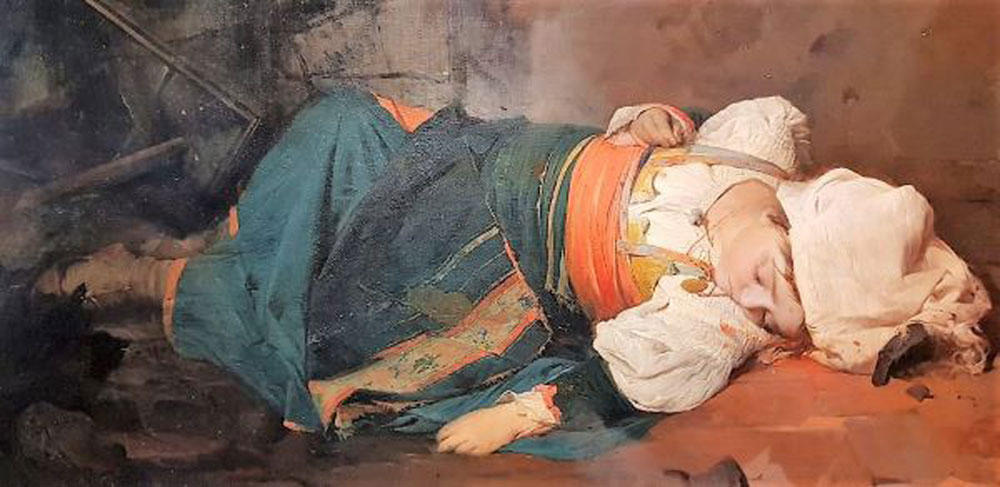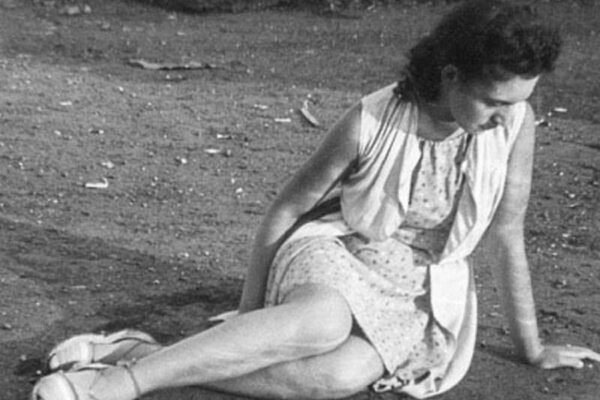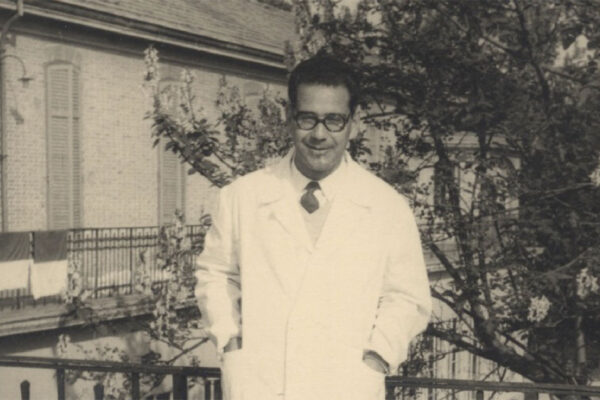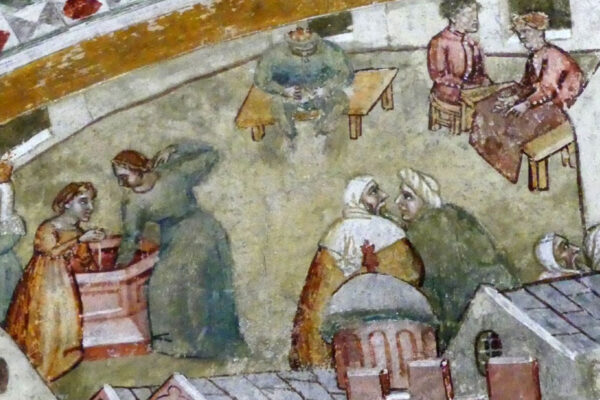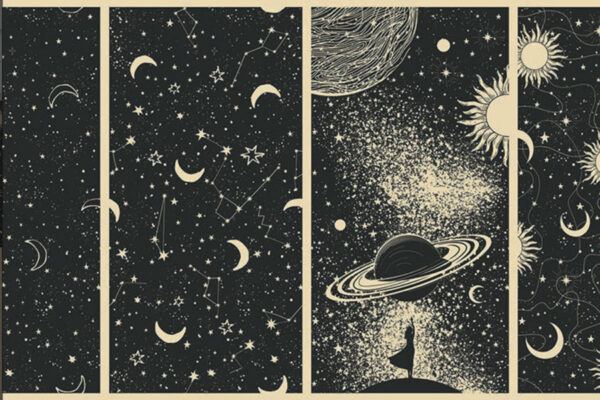Italian Jews Between Segregation and Emancipation (1849-1871). The Jewish Museum of Rome opens a magnificent exhibition dedicated to the period that goes from the second Roman Republic to the annexation of Rome to unified Italy: Seventy works of art including rarely seen paintings, drawings, etchings and photographs that will remain on view until May 27, 2022. Curated by Francesco Leone and Giorgia Calò. Catalogue by Gangemi Editore. Image: Gerolamo Induno, Girl from Trastevere killed by a bomb, 1850
We are please to publish the preface by the Chief Rabbi of Rome, Rav Riccardo Di Segni.
Napoleon’s campaigns in Italy gave the Jews of the various states of the peninsula a taste of freedom and equality that they had not experienced in centuries. Even if that ephemeral parenthesis was not immune from criticism, and not all that glittered was gold, the abrupt return to the ancient limitations imposed by the Restoration was very badly endured by the Jews, who saw the Risorgimento as the the instrument to conquer the so desired freedom and equality.
It was not a simple and predictable process, but the hopes aroused by the Statuto Albertino and by the subsequent (even if not timely) decrees that granted equality to the “Jews of the Kingdom” led to a strong identification of the Jewish minority with the national cause and the Risorgimento movement.
On the other hand, Jewish history became an artistic and spiritual model for patriots, as demonstrated by the success of Verdi’s Va’ pensiero, which compared the fate of the unfortunate Jews exiled and deprived of their homeland to that of the Italians divided and dominated by foreigners. In this ideal fusion between the two worlds, the contradictions were overshadowed: the Jews became citizens of a new nation, forgetting the fact that they themselves, until a moment earlier, had been considered not only of a different religion, but of a different nation, something that had been handed down in the texts of their tradition.
The Italians, when they drew inspiration from the historical Jewish model, did not ask themselves too much about Jewish nationality. When Manzoni, in March 1821, spoke of a free people, all united by a common heritage, he defined its characteristic elements as follows: «Una d’arme, di lingua, d’altare, di memorie, di sangue e di cor» (in weapons, in language, in altar, in memory, in blood, and in heart). Even for the most enthusiastic Italian Jews, almost everything was acceptable except the altar and perhaps blood, if this meant lineage.
It took centuries to get to the breakthrough of 1848, and decades more for the situation to come to a head, in the worst possible way, at the end of a period of integration that unfolded over 90 years. In 1848 the Italian Jews saw the beginning of “The time of love” (Ez. 16:8). For Roman Jews, attaining that love was even more painful, as they had to wait until September 20, 1870 to get a taste of their new condition.
Dedicated to the first decades of this love, this exhibition is a great opportunity to reflect on the complexities of history and the process of integration.


